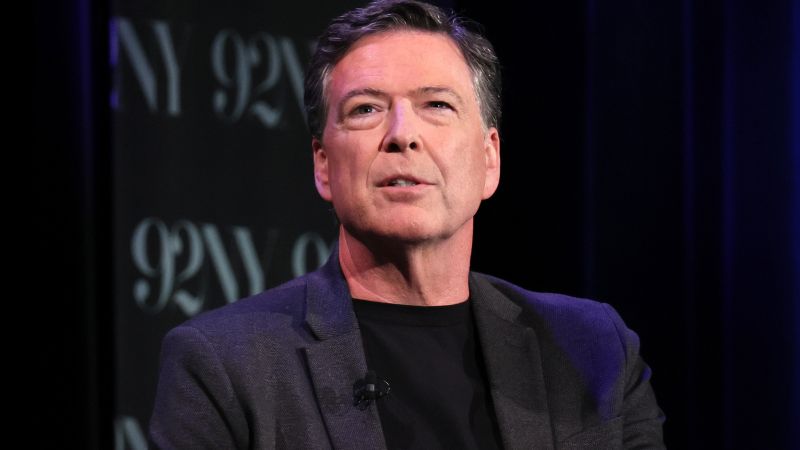On a significant day in the ongoing political narrative of the United States, James Comey, the former director of the FBI, found himself at the center of a controversial incident that led to intense debates online. Comey posted an image on Instagram depicting seashells arranged in a formation that some interpreted as the numbers “86 47”. The timing of this post, along with the numbers it featured, stirred a wave of accusations from Republican circles, with some alleging that the post contained veiled threats against former President Donald Trump.
To unpack the implications of the numbers, the number “86” is a term often used in slang to refer to discarding or removing something, while “47” relates to Trump being the 47th president of the United States. This numerical symbolism raised eyebrows and set off alarm bells among some commentators.
The fallout from the post was swift and severe. Donald Trump Jr., a key figure in Trump’s political sphere, took to social media to voice his outrage. He claimed that Comey was implicitly calling for his father’s assassination, describing the former FBI director as someone who was supported by what he termed the “Dem-Media” machine. This reaction underscores the heightened sensitivities and partisan divisions regarding political discourse, especially concerning threats or insinuations about violence against political figures.
In light of the backlash, Comey quickly denied any intentions of inciting violence. He explained that he posted the image of the shells following a beach walk and was unaware of the connotations associated with the numbers. In his clarification, Comey highlighted his opposition to violence and noted that the notion that his post could be interpreted as threatening never occurred to him. Consequently, he decided to take the post down, demonstrating a willingness to address the unintended consequences that arose from his innocent attempt at creativity.
Meanwhile, Kristi Noem, the Secretary of Homeland Security, also responded to the incident on social media, indicating that both the Department of Homeland Security and the Secret Service were investigating the alleged threat against Trump attributed to Comey. She assertively labeled Comey as a “disgraced” former FBI Director, emphasizing the seriousness of the claims being made about his post and underlining the administration’s commitment to ensuring Trump’s safety.
The Secret Service later issued a statement acknowledging that they were aware of social media discussions surrounding the incident and that they take threats against their protectees seriously. They elaborated that they are prepared to investigate anything that could be construed as a threat, reinforcing the gravity of such accusations in the current political climate.
In responding to inquiries from media outlets, Comey redirected attention back to his Instagram post, reinforcing the simplicity of the earlier image and its origins. He maintained that the literal interpretation of his harmless beach photo had been twisted into something darker — an occurrence all too common in today’s polarized political environment.
Adding to the tension, Kash Patel, the current FBI Director, commented on the situation, stating that the FBI was in communication with the Secret Service regarding the matter. He reiterated the agency’s supportive role, bringing clarity to the jurisdictional aspects of the investigation.
Delving deeper into Comey’s historical context, it is notable that he was previously a significant figure in the investigation concerning Russian interference in the 2016 presidential election and the Hillary Clinton email scandal. His tenure as FBI Director has been polarizing, drawing criticism from both sides of the political aisle. Trump himself has referred to Comey disparagingly, framing his actions during his directorship as self-serving and attention-seeking.
The entire incident highlights the profound political divisions in the United States, where remarks can echo through partisan lines and spiral into broader discussions about security, freedom of speech, and the responsibilities of public figures to communicate responsibly amidst rising tensions. As this story continues to evolve, it remains emblematic of the challenges that accompany public discourse in a highly polarized nation.



